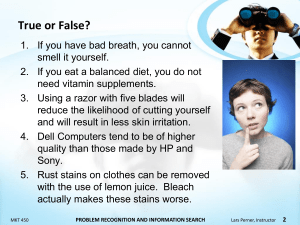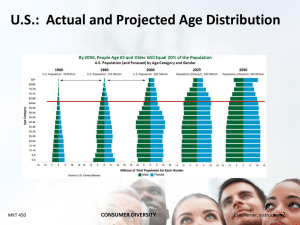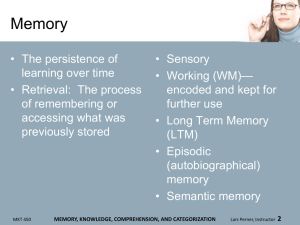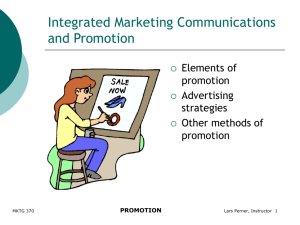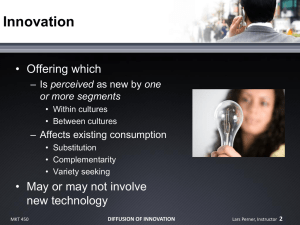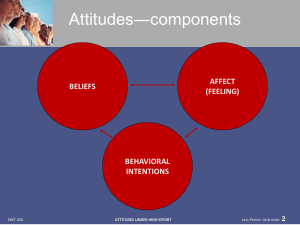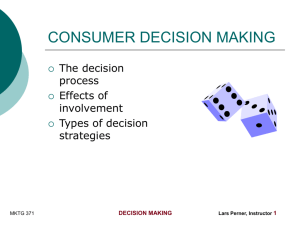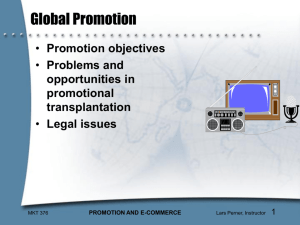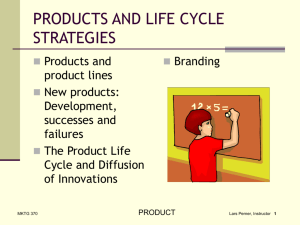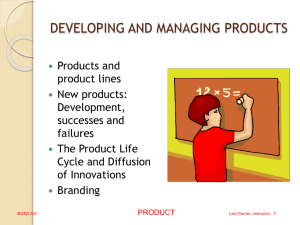Judgment & Decision Making: High Effort Strategies
advertisement
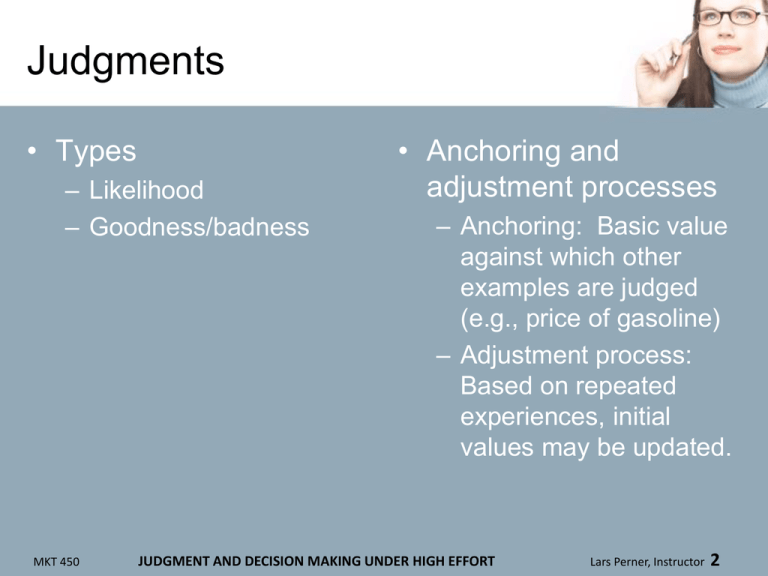
Judgments • Types – Likelihood – Goodness/badness MKT 450 • Anchoring and adjustment processes – Anchoring: Basic value against which other examples are judged (e.g., price of gasoline) – Adjustment process: Based on repeated experiences, initial values may be updated. JUDGMENT AND DECISION MAKING UNDER HIGH EFFORT Lars Perner, Instructor 2 Mental Accounting • Consumers tend to see their spending as from “accounts” in a budget – The way an opportunity is categorized may affect a decision—e.g., “dining out” budget has been spent but “entertainment” budget has not – Something received as gift from a spouse may be cause of happiness even if the person would not have spent the same amount of money himself/herself. • “Emotional accounting” MKT 450 JUDGMENT AND DECISION MAKING UNDER HIGH EFFORT Lars Perner, Instructor 3 Biases in Judgment • Confirmation bias • Self-positivity • Negativity: Negative info is viewed as more “diagnostic” and weighted more heavily • Mood induced • Prior brand evaluations and experience (discounting or rejecting of new info) • Distortions due to calculation difficulty MKT 450 JUDGMENT AND DECISION MAKING UNDER HIGH EFFORT Lars Perner, Instructor 4 Decision Sets • Consideration set—possibilities that may be activity considered • Inept set—seen as unacceptable • Inert—seen with indifference – Attractiveness effect: Poor brands make brands in consideration set look better MKT 450 JUDGMENT AND DECISION MAKING UNDER HIGH EFFORT Lars Perner, Instructor 5 Issues in Selecting Decision Criteria • Goals • Time point – Construal theory: More abstract judgments are made about possible future decisions; decisions about actual impending purchases tend to be based on more concrete issues • Framing MKT 450 JUDGMENT AND DECISION MAKING UNDER HIGH EFFORT Lars Perner, Instructor 6 Compensatory vs. NonCompensatory Decisions • Compensatory: Decision based on overall value of alternatives (good attribute can outweigh bad ones) • Non-compensatory: Absolutely must meet at least one important criterion (e.g., car must have automatic transmission) MKT 450 JUDGMENT AND DECISION MAKING UNDER HIGH EFFORT Lars Perner, Instructor 7 Brand vs. Attribute Based Processing • Brand based: Each brand is considered as a whole to be compared against other brands MKT 450 • Attribute based: Attributes are generally selected in order of importance, with the most important attribute considered for each brand, followed by the consideration of less important attributes JUDGMENT AND DECISION MAKING UNDER HIGH EFFORT Lars Perner, Instructor 8 Brand Based Models • Multiattribute Model (Expectancy-Value) • Conjunctive model: Each brand must meet a minimum cutoff on each attribute to remain “in the running” • Disjunctive model – Decision based on the most important variables rather than all – Consideration of both absolute minimum and “good” levels MKT 450 JUDGMENT AND DECISION MAKING UNDER HIGH EFFORT Lars Perner, Instructor 9 Multiattribute Models of Attitude and Judgment--Review • Attitude computed as a function of multiple attributes weighted for importance: Ab i 1WiXib n Ab= attitude toward brand b Wi: weight of attribute I Xib: belief about brand b’s performance on attribute I • Model assumes rationality Calculations will not be required on the exam. You should know conceptually what this involves conceptually—i.e., weighing importance and intensity of feeling. MKT 450 JUDGMENT AND DECISION MAKING UNDER HIGH EFFORT Lars Perner, Instructor 10 Attribute Based Models • Additive difference model: Brands are compared two at a time on all attributes—thus, there is some tradeoff between attributes • Lexicographic: A comparison is made based on the most important attribute, with lower importance attributes used for tie-breaking • Elimination by aspects: Brands with attributes below acceptable levels on attributes are sequentially eliminated, starting with the most important attribute MKT 450 JUDGMENT AND DECISION MAKING UNDER HIGH EFFORT Lars Perner, Instructor 11 Decisions Based on Gains and Losses • Consumers tend to be more sensitive to perceived “losses” rather than gains • Framing effects— attractiveness of an option will be judged based on whether framed as a “gain” or “loss” MKT 450 JUDGMENT AND DECISION MAKING UNDER HIGH EFFORT Lars Perner, Instructor 12 Other Issues in High Effort Decisions • Decision delay • Non-comparable options: Generally, the more different the alternatives, the more abstract the standards of evaluation MKT 450 JUDGMENT AND DECISION MAKING UNDER HIGH EFFORT Lars Perner, Instructor 13

